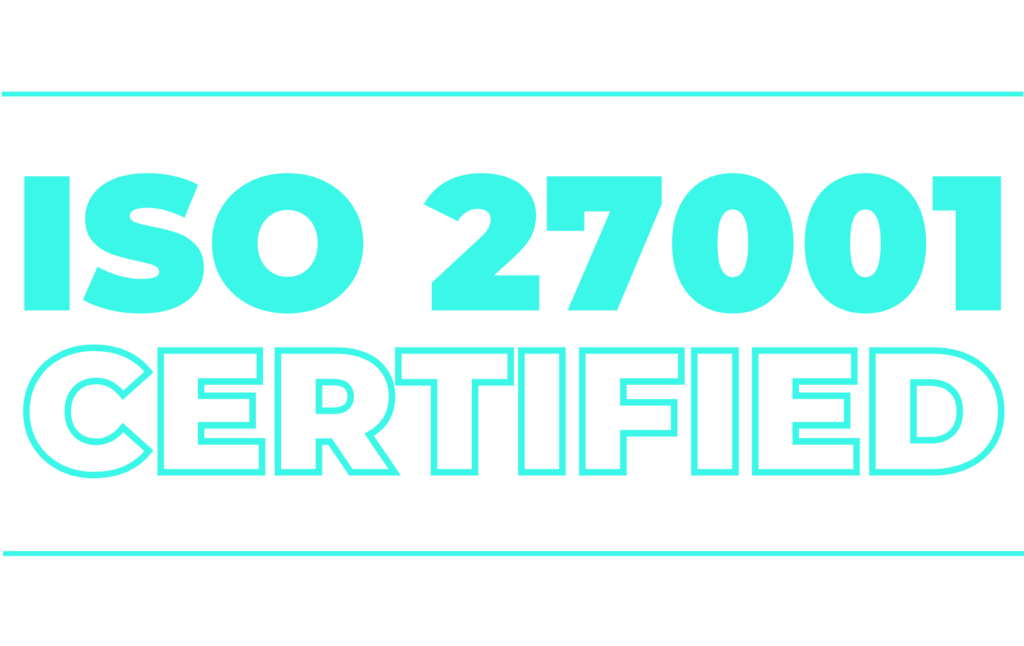AI agents are reshaping how businesses operate, offering complex task automation that enhances efficiency while ensuring more intelligent decision-making. From handling routine tasks to surfacing insights that guide strategic actions, AI’s role in modern business is rapidly expanding.
At Zartis, we are actively exploring AI-driven solutions across multiple departments — from software engineering to operations, finance, HR, and beyond. One key area where AI has significant potential is for our Growth Team, which encompasses both our sales and marketing functions.
In our business, for our Growth Team, success depends on human connection. Timely, relevant, and personalised engagement with existing and potential clients. This includes reaching out when key changes happen — such as a contact changing jobs, a company announcing major news, or a prospect engaging with thought leadership content. However, scaling this level of engagement manually is nearly impossible.
That’s where AI agents come in. Our approach is focused on leveraging AI to intelligently surface opportunities for outreach, ensuring we connect with the right people at the right time, without creating unnecessary noise. Some parts of this initiative are still a work in progress, but we are already seeing how AI can enhance prospect nurturing, reduce manual effort, and improve data accuracy.
In this article, we’ll walk through how we are building AI-powered workflows for prospect engagement, the challenges we are solving, and the key metrics we are tracking as we refine this approach.
The Challenge: Scaling Personalised Outreach Without Noise
A strong sales and marketing strategy depends on relevance and timing. The best outreach is not just well-written — it’s context-aware, meaning it happens when something meaningful has changed for the prospect. Whether it’s a hiring need, a new job, a company milestone, or an engagement with thought leadership, context is everything.
However, keeping track of these events manually is difficult, especially at scale. We knew, you can try but things are bound to slip you at some point. Some of the key challenges include:
1. Tracking Relevant Triggers in Real-Time
- Contacts change jobs, companies evolve, and industry news breaks daily.
- Identifying the right moment to reach out without spending hours researching is challenging.
2. Balancing Automation and Personalisation
- Traditional automation tools help with email sequences but lack true context awareness.
- The challenge is to automate only what makes sense, keeping outreach personal and relevant rather than robotic.
3. Avoiding Overcommunication or Spam
At Zartis, we’ve never seen the value in guerrilla outreach strategies or cold outreach for the sake of it. Over the years we’ve learned that creating real connections and nurturing them is what really works. So, one of the biggest considerations we had was to make sure we don’t alienate our network by bombarding them with semi-relevant content that adds little value to their lives.
- Sales and marketing teams risk overloading prospects with messages if they automate without a smart strategy.
- AI needs to act as a smart filter, ensuring outreach adds value rather than creating noise.
4. Maintaining CRM Data Accuracy
- Outdated information leads to poor engagement (e.g., congratulating someone on a job they left six months ago).
- AI can play a key role in automatically updating CRM records based on external data signals.
The goal of our AI-powered prospect nurturing initiative is to solve these challenges, ensuring that every outreach is:
- Timely – Triggered by meaningful events.
- Personalised – Tailored to the individual or company.
- Non-intrusive – Adding value rather than overwhelming prospects.
The AI-Powered Growth Strategy
To solve the challenges of timely, personalised, and scalable prospect engagement, we are implementing AI-powered workflows that integrate real-time data insights with automated but meaningful outreach. Our approach focuses on three key pillars:
1. Data-Driven Insights for Engagement
AI is only as good as the data it processes. To make informed outreach decisions, we integrate multiple external data sources into our HubSpot CRM, ensuring that relevant updates about prospects and companies are surfaced automatically. These sources include:
- Career Sites – Job openings, job changes, promotions, and company moves.
- Industry News Platforms – Google Alerts, Crunchbase, and Owler for company updates.
- Thought Leadership Engagement – Tracking interactions and analysing which Zartis content may be useful for them. This involves our plans to infer interests from company tech stacks, which we can link to recent job openings and use that in multiple ways.
By having this data automatically aggregated and structured, we can identify the right moments to reach out — without sales or marketing teams having to manually search for updates.
2. Automation for Timely Outreach
Once AI detects a key update, the next step is triggering the right action. Instead of generic, mass outreach, our AI agents create personalised engagement workflows that include:
- Task Creation: Assigning follow-ups to the right team member (aka the contact owner on HubSpot).
- Personalised Messaging: Drafting emails that reference the latest prospect updates, prepared to be reviewed by the contact owner of the lead in our CRM.
- CRM Updates: Ensuring records stay accurate, reducing manual data entry and updates.
For example, if a prospect changes jobs, AI detects this update via LinkedIn data and:
- Updates the prospect’s new role in the CRM.
- Creates a task for the Growth Team to send a personalised message to congratulate them on the change.
- Drafts a congratulatory email with relevant content about their new industry or role.
3. Aligning Outreach with Thought Leadership
AI also plays a role in content-driven engagement, ensuring prospects receive valuable insights rather than just sales messages. Our AI agents:
- Match Zartis blog content to a prospect’s industry or interests.
- Recommend articles to sales reps inside HubSpot for easy sharing.
- Schedule periodic follow-ups with relevant thought leadership, reinforcing relationships. And this is not a set up and forget type of a system. The AI agents are configured to remind the team every 3 months if a contact has not been reached out to since then. This allows us to come up with meaningful and periodic interactions, unique to that person.
This strategy ensures that AI-powered outreach is not just about sales; it’s about value. By focusing on timely, insightful engagement, we can build stronger connections without overwhelming prospects with irrelevant messages.
Key Features of Our AI-Powered Prospect Nurturing
Our AI-driven approach to prospect nurturing is centred around surfacing relevant, actionable insights at the right time, while minimising manual effort for our Growth Team. Below are the core features we are implementing:
1. Job Changes: Timely and Personalised Outreach
AI detects when a prospect changes jobs by pulling data from LinkedIn and other sources. Instead of a generic “Congrats on the new role!” message, AI ensures that outreach is contextually relevant by:
- Updating the CRM with new job details.
- Drafting a personalised email that acknowledges the change while connecting it to how we can support them in their new role.
- Helping sales and marketing teams prioritise outreach, ensuring key prospects don’t go unnoticed.
2. Company & Sector News: Engaging When It Matters
AI monitors news sources, funding announcements, product launches, and industry trends, ensuring our Growth Team can engage when there’s a relevant development.
- When a prospect’s company announces a funding round, AI triggers an internal notification suggesting a strategic outreach message about scaling teams efficiently.
- If a company enters a new market, AI recommends content related to international expansion from our blog.
- These insights are automatically added to HubSpot, making it easy for the team to act on them.
3. Birthdays & Cultural Events: Strengthening Relationships
People appreciate thoughtful gestures. AI helps track birthdays, work anniversaries, and cultural events for more meaningful engagement.
- It stores key dates in HubSpot and automatically suggests personalised messages.
- If a prospect celebrates a major cultural holiday, AI recommends an appropriate engagement strategy, ensuring outreach is both timely and respectful.
4. Offering Relevant Thought Leadership, Not Just Content
Rather than blindly sending blog links, AI builds an interest profile for each prospect, considering:
- Their role, industry, and past interactions.
- Their company’s recent activities and focus areas.
- Broader market trends that might be relevant to them.
By doing so, it ensures that every piece of content we share answers a real question or challenge they are facing, making interactions more valuable.
Example: AI-Powered Engagement Based on Company Growth
Instead of focusing on job changes (as covered earlier), let’s consider another real-world scenario:
- A company raises new funding.
- AI detects this from Crunchbase, Owler, or Google Alerts.
- AI updates the CRM, noting the funding round and potential business growth.
- AI recommends a strategic outreach angle—for example:
- If the company is expanding its tech team, AI suggests a conversation about scaling development teams efficiently.
- If they mention AI investment, AI prompts the Growth Team to share insights on AI adoption strategies.
- AI generates a tailored message for the sales or marketing team to review and personalise before sending.
By surfacing strategic engagement opportunities, AI helps us stay proactive rather than reactive. It ensures we are always engaging with prospects at the right time, in a way that is genuinely valuable and not intrusive.
Measuring Success: Key Metrics to Track
Since our AI-driven prospect nurturing initiative is still a work in progress, our focus is on defining the right success metrics rather than drawing firm conclusions just yet. To measure the impact of AI on our Growth Team’s effectiveness, we are tracking key performance indicators (KPIs) in three critical areas:
1. Task Adoption
Are AI-Generated Insights Being Used?
One of the simplest ways to measure effectiveness is by tracking whether AI-generated outreach translates into action.
- How many AI-created tasks are completed by the team?
- Are sales and marketing teams engaging with AI-suggested prospects?
- Which AI-generated tasks are most useful, and which are ignored?
By monitoring adoption, we can refine the system, ensuring that AI prioritises the most relevant engagement opportunities and reduces unnecessary task creation.
2. Engagement Quality
Are We Reaching the Right People in the Right Way?
While automation can improve efficiency, outreach is only valuable if it leads to meaningful conversations. We track engagement quality by looking at:
- Email open and response rates for AI-suggested messages.
- Meeting conversion rates: how often AI-triggered outreach leads to a scheduled call.
- Personalisation effectiveness: whether AI-generated messages require significant manual tweaking or are ready to send as-is.
These indicators help us determine whether AI is delivering relevant outreach opportunities rather than just automating for the sake of efficiency.
3. Pipeline Impact
Is AI Helping Us Generate and Nurture Leads?
Ultimately, the goal of AI-driven prospect engagement is to support business growth. We evaluate its impact on the sales pipeline by tracking:
- The number of deals influenced by AI-powered outreach.
- The impact of AI-driven nurturing on conversion rates.
- Lead movement through the funnel—whether AI-triggered touchpoints help revive cold leads or accelerate warm ones.
Because relationship-building in B2B sales is a long-term effort, some of these metrics will take time to fully materialise. However, early indicators, such as increased engagement, improved task completion, and stronger pipeline movement, will signal whether AI is helping us build meaningful connections with prospects.
4. CRM Data Accuracy: Are We Reducing Manual Effort and Improving Data Quality?
A secondary but equally important goal of this initiative is improving CRM data hygiene by reducing outdated or incorrect information. We track:
- The accuracy of AI-updated prospect records.
- Reductions in manual data entry.
- How often AI catches and corrects outdated job roles or company affiliations.
If AI can keep our CRM updated without manual intervention, it will free up valuable time for our Growth Team, allowing them to focus on relationship-building rather than data entry.
By continuously iterating based on these metrics, we aim to refine our approach, ensuring that AI enhances our sales and marketing efforts rather than replacing the human element.
Conclusion: The Future of AI in Growth Teams
Our exploration into AI-driven prospect nurturing is not just about automation for efficiency, it’s about making engagement more relevant, valuable, and well-timed.
By leveraging AI agents, we can:
- Identify key moments to reach out, ensuring prospects receive messages when they matter most.
- Automate time-consuming research tasks, allowing our Growth Team to focus on relationships.
- Maintain clean, up-to-date CRM records, reducing manual data entry.
- Align content recommendations with actual prospect needs, making outreach more insightful.
As we refine our AI-powered workflows, we are keeping a few key lessons in mind:
1. AI Should Enhance, Not Replace, Human Interaction
The goal is not to let AI fully automate prospect engagement—it’s to empower sales and marketing teams with better insights. AI helps us scale personalisation, but the human touch remains critical.
For example, while AI can draft a congratulatory email for a job change, a sales rep should add a personal anecdote or tailored touch point to make it feel authentic and meaningful.
2. Balancing Automation and Relevance is Crucial
A key risk with AI-driven outreach is over-automation, where prospects receive too many messages or engagement feels impersonal. To avoid this, we are refining how often AI triggers outreach so it remains valuable, not intrusive. Most importantly, our AI agents for the Growth team require human oversight before AI-generated messages are sent.
So, ensuring AI suggests insightful, high-value touchpoints, rather than just automating for the sake of automation is the key.
By taking this measured approach, we can build trust and credibility rather than simply increasing the volume of outreach.
3. The Future: Expanding AI’s Role in Predictive Engagement
As we continue testing and optimising our AI-powered workflows, we see future opportunities to enhance our approach:
- Predictive Outreach: Using AI to forecast when a prospect is likely to engage—before they even make a move.
- Deeper Content Matching: Refining AI-driven content recommendations so that insights feel even more tailored.
- Cross-Department AI Integration: Applying learnings from the Growth Team’s AI use case to other areas of the business.
As we refine our approach, we are excited to see how AI can help us build stronger relationships, generate real value for prospects, and ultimately support business growth in a scalable, non-intrusive way.
What’s Next?
If you’re interested in leveraging AI to enhance your sales and marketing efforts, we’d love to hear from you. Let’s explore how AI-powered strategies can drive smarter, more meaningful engagement for your business.


